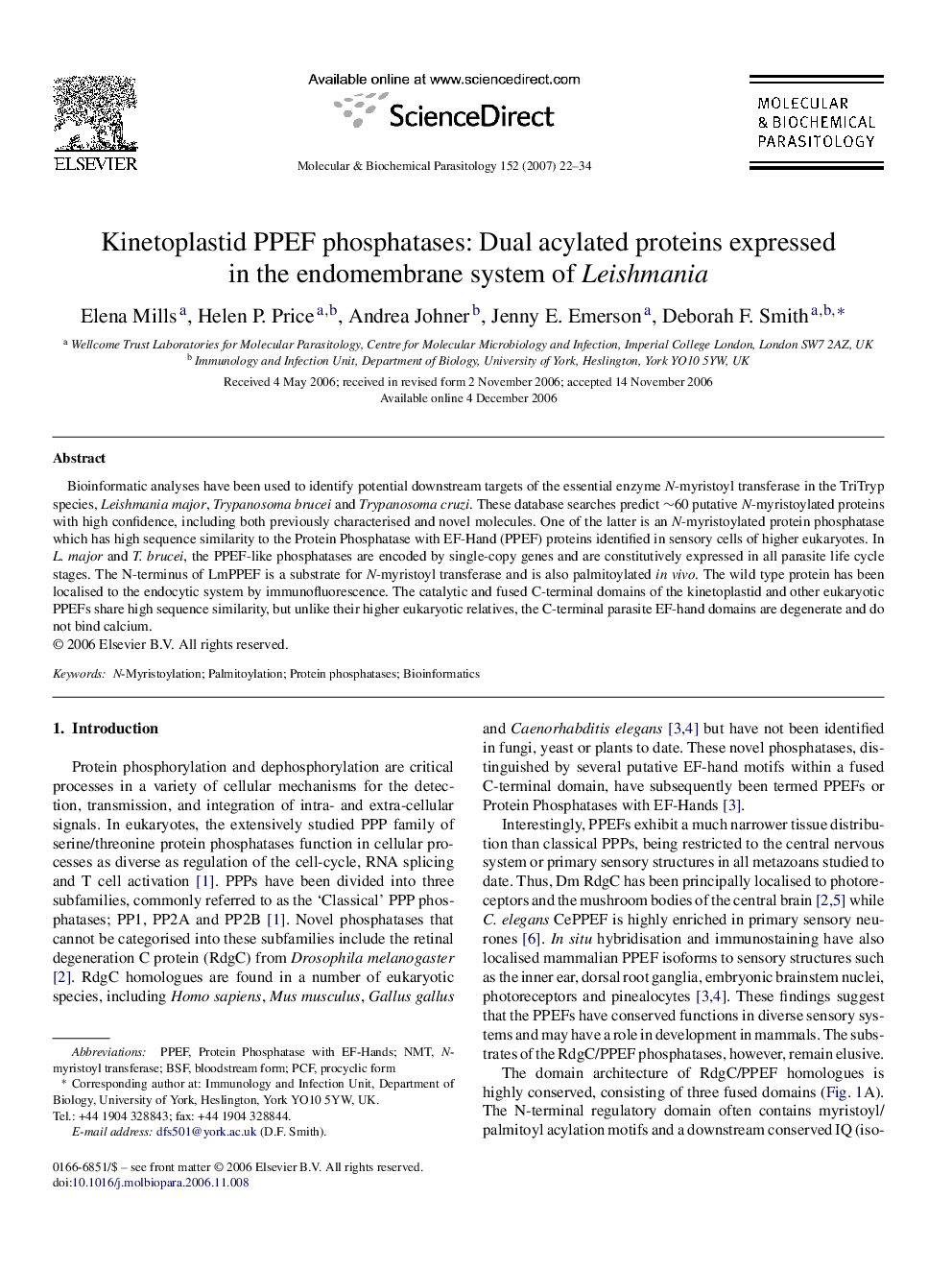| Article ID | Journal | Published Year | Pages | File Type |
|---|---|---|---|---|
| 5916191 | Molecular and Biochemical Parasitology | 2007 | 13 Pages |
Abstract
Bioinformatic analyses have been used to identify potential downstream targets of the essential enzyme N-myristoyl transferase in the TriTryp species, Leishmania major, Trypanosoma brucei and Trypanosoma cruzi. These database searches predict â¼60 putative N-myristoylated proteins with high confidence, including both previously characterised and novel molecules. One of the latter is an N-myristoylated protein phosphatase which has high sequence similarity to the Protein Phosphatase with EF-Hand (PPEF) proteins identified in sensory cells of higher eukaryotes. In L. major and T. brucei, the PPEF-like phosphatases are encoded by single-copy genes and are constitutively expressed in all parasite life cycle stages. The N-terminus of LmPPEF is a substrate for N-myristoyl transferase and is also palmitoylated in vivo. The wild type protein has been localised to the endocytic system by immunofluorescence. The catalytic and fused C-terminal domains of the kinetoplastid and other eukaryotic PPEFs share high sequence similarity, but unlike their higher eukaryotic relatives, the C-terminal parasite EF-hand domains are degenerate and do not bind calcium.
Keywords
Related Topics
Life Sciences
Biochemistry, Genetics and Molecular Biology
Molecular Biology
Authors
Elena Mills, Helen P. Price, Andrea Johner, Jenny E. Emerson, Deborah F. Smith,
